
Making Church Safe for LGBTQIA+ People
Sydney WorldPride during February and March 2023 was a celebration of Australia’s LGBTQIA+ community. It presented many wonderful opportunities for queer visibility and community, and the voices of LGBTQIA+ people of faith were amplified to a new volume. And yet, in its aftermath, we have witnessed significant backlash, often from Christian groups. Now more than ever, it is important that queer people are safe in our churches.
Many Uniting Churches describe themselves as “inclusive” communities who welcome LGBTQIA+ people into their pews, while others are “affirming.” But what is the difference between the two, and are they enough to ensure that queer people of faith can bring their whole selves to church? Insights reached out to some LGBTQIA+ members of Uniting Church congregations, as well as queer and ally clergy, for their thoughts on what it means to create safe spaces.
Georgia* attends Newtown Mission in Sydney, which officially voted to become an affirming congregation in August 2022, the fruit of many years of work. She told Insights, “I think if we start with the premise that all people are made in the image of God, that we are all image bearers, to exclude any group of people is counter to this.”
“The difference between ‘affirming’ and ‘inclusive’ is full of hurt for many. There is a vast difference between saying [to] someone that ‘you can be here’ and ‘you are celebrated here’.” For Georgia, an affirming stance says, “All of you is welcome, celebrated, and belongs here. All of you is an image bearer, all of you reflects the glory and creativity and wonder of God.”
“It is also important to not only approach [being] affirming as ‘making more space,’ but that together we become more,” Georgia said. “The queer community have so much to offer: resilience, joy, radical acceptance, and a reflection of the expansiveness of God. We are better together. We are more together.”
River Wilson, a member of Leichhardt Uniting Church, told Insights that “Affirming is action-based. I have been in ‘inclusive’ churches before [that have] actively campaigned against queer rights and preached against the community but always said they were welcome. Affirming would be a [church] that goes beyond inclusion and actively works towards a better future for the LGBTQIA+ community, not just in secular spaces but ministry spaces also.”
“I’m preaching at [Leichhardt Uniting Church] soon and that concept rattles my brain, as even in an inclusive church that would be absolutely unheard of,” they said. “Affirm the queer community by having zero roadblocks to their participation and sense of place and belonging within the community.”
Kim Langford is the Uniting Church chaplain at the University of Newcastle, where she is one of two chaplains on campus who have completed ALLY training to support LGBTQIA+ students. For Kim, “the difference between inclusivity and affirmation is something of a passive [versus] active stance.”
“[Affirming queer people] is not only about a protocol of acceptance but meeting the person in all their human complexity and showing a deep interest in their aspirations and what life means to them in whatever dimension they seek meaning. I embrace the person’s sexuality and gender without reducing them to just that.”
Rev. Dr Elizabeth Raine serves at Tuggeranong Uniting Church, who have nourished a strong LGBTQIA+ ministry for the past seven years through the Rainbow Christian Alliance, which meets monthly in the church space as is supported by members of the congregation. Elizabeth has provided theological input at a number of these sessions, “to explain how we see an affirming perspective to be thoroughly grounded in scripture and completely faithful to the Gospel.”
After the 2018 decision of the Assembly regarding marriage, Tuggeranong held a seminar to directly address and discuss sexuality in community. “This process helped to generate honest conversations, in which some who were ‘wondering’ or ‘not really supportive’ were able to explore issues and talk things through,” she told Insights. The congregation then voted to allow same-gender marriages on site, with “overwhelming support”.
Rev. Dr Josephine Inkpin, who serves at Pitt St Uniting Church in Sydney, has spoken often on the topic of LGBTQIA+ inclusion in the church. In a 2021 address to the Diversity and Inclusion Council of Uniting NSW and ACT, she outlined a framework of three different levels of inclusion, ranging from “weak” to “strong.”
“Strong inclusion… is not about even genuine welcome, but about revealing the gifts of all,” Rev. Dr Inkpin described. “It includes affirmation but is really about celebration, led by everyone in our diversity when we are all truly empowered.” This form of inclusion is a “verb,” actively practiced “day by day,” which in turn leads churches toward “expansiveness.”
Rev. Dr Inkpin told Insights that she hopes the church will set aside the language of “inclusivity” and even shift beyond “affirming” queer people. “A key problem with ‘affirming’ is that it still treats LGBTQIA+ people as somewhat ‘other’ and doesn’t really recognise both our gifts and agency, presuming we just need support rather than being the ones who are gifts of God to help everyone ‘liberate’ and ‘transform’,” she said.
Georgia from Newtown Mission described how her congregation’s affirming stance means she can “actually worship and engage knowing that anyone is welcome, I can feel safe to invite people or talk to my queer friends about my faith community, knowing they would be welcomed wholeheartedly.”
“We continue to learn together, make mistakes together, apologise together, and try to model what it means to be the people of God, seeking to live out love in this world. Language continues to be an important aspect of how we worship and do life together. In simple ways, we try to use gender-inclusive and non-gendered terms for God,” she said.
QueerTheology.com, a Christian organisation led by LGBTQIA+ people and devoted to resourcing and community, offers An Inclusive Church Checklist for congregations who are on this journey of inclusion and affirmation, available for free download. These 15 practical steps include providing gender-neutral bathrooms, respecting names and pronouns, offering rituals for transition, preaching LGBTQIA+ stories from the pulpit, and involving queer perspectives in decision-making and pastoral care.
*Name has been changed for anonymity.
Gabi Cadenhead is a mission worker for Christian Students Uniting at the University of Sydney
- Categories: Belief Matters, Features








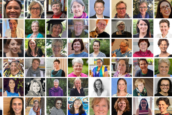


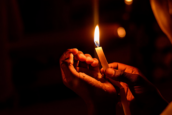

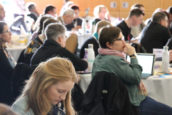




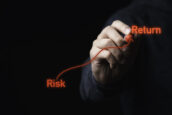

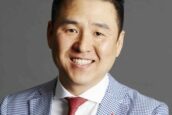

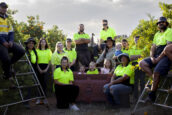
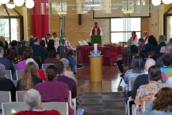





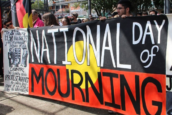


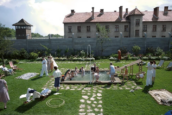






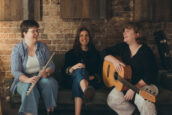
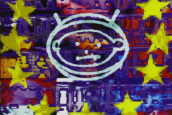







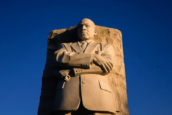












2 thoughts on “Making Church Safe for LGBTQIA+ People”
Thanks again for an excellent article concerning queer people in
Uniting church.
To Georgia and other LGBTQIA+
In reading the Insights article, I am left with the impression that your primary identity is your sexuality.
As Christians, our primary identity is that we have been reconciled to God through Jesus. Our sense of worth and value and identity comes from this above all.
Any other identity is secondary to this.
From my reading of the Bible I cannot affirm homosexuality as God’s creation.
But I can join with you around the table of broken bread and spilt wine, thanking Jesus for giving His life to bring us back to the Father.
Robin Nance
Pastor, Newtown Mission, 1999-2001.